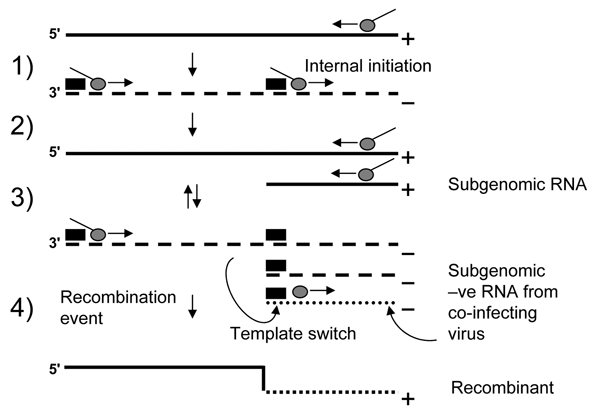Volume 11, Number 7—July 2005
Research
Norovirus Recombination in ORF1/ORF2 Overlap
Figure 3

Figure 3. . A simple mechanism for recombination in norovirus. 1) RNA transcription by the RNA-dependent RNA polymerase (RdRp) (gray circle) generates a negative-stranded intermediate (dashed line). 2) Binding of the RdRp to the almost identical RNA promoter sequences (filled boxes) generates positive-stranded (straight line) genomes and subgenomic RNA. 3) These templates direct RNA synthesis from the 3´ end that leads to the generation of both a full-length negative genome and a negative subgenomic RNA species. 4) Recombination occurs when the enzyme initiates positive-strand synthesis at the 3´ end of the full-length negative strand, stalls at the subgenomic promoter, and then template switches to an available negative subgenomic RNA species generated by a co-infecting virus. The net result is a recombinant virus that has acquired new open reading frame (ORF)2 and ORF3 sequences.